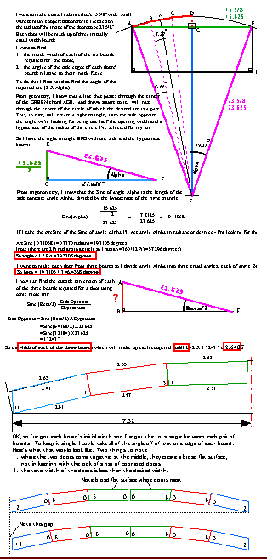OK - so coopered doors it is! Simple right? Cut some strips of wood, angle the edges that butt up against each other, glue them together and you've got a curved / coopered door! Some square and some angled rip cuts is all it takes to make the strips (which are called staves for some reason). Seems simple enough (sound familiar?).
Now how wide should I make the slats? That's when the engineer part of me kicked in. Arcs, cords, radius, hypotenuse, tangent, sine - ARCTANGENT - ARCSINE! Diagrams - Spreadsheets - Circles and Arrows! On Donner - On Prancer ... !
Daze / days later I had all the math worked out for
- any opening width
- any center off set
- any number of slats/staves
and all in a simple spreadsheet. Enter the opening width, the center offset and the number of slats/staves and let the computer give you the initial width of the slats / staves, the edge angle - in decimal degrees to four significant digits AND the radius of the circle for the results. Here's a greatly reduced "Circles and Arrows With A Paragraph On The Back" version of the trig and geometry involved in calculating widths and angles. If you really, really, really want the full size version e-mail me and specify that you want CoopMath1.GIF, CoopMath2.GIF and CoopMath3.GIF - 40K, 28K and 36K, respectively.

If all this math stuff is intimidating FEAR NOT! There's more than one way to skin a cat.